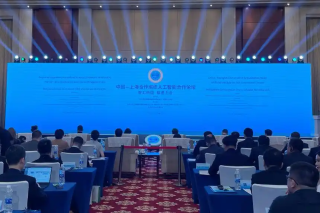Advantageous location
Adjacent to rivers and the sea, Tianjin enjoys a favorable geographical location. Gradually formed during a long sea retreat, the Tianjin region has a geological history of 2 billion years. The total land area of Tianjin is 11,966.5 square kilometers, of which 93 percent is plains. The northern part of Tianjin has an average elevation of 1,052 meters, while that of the southeast part adjacent to Bohai Bay is only 3.5 meters.
The name "Tianjin" was adopted during the Ming Dynasty(1368-1644), meaning the ferry of the emperor. Tianjin was one of the first Chinese cities to come into contact with modern Western civilization. It has taken the lead in such fields as industry, finance, commerce, education, and military forces.
Tianjin witnessed more than 100 achievements in modern China, such as the first modern university, the first public hospital, the first post office, and the first mint. Tianjin was also the second largest industrial and commercial city in China and the northern economic center.
After the founding of the People's Republic of China, Tianjin became a municipality directly under the central government. After China implemented its policy of reform and opening up in 1978, Tianjin became one of the first cities to open to the outside world, and achieved rapid economic and social development.
In the new stage of reform and opening up, the development and opening up of Tianjin’s Binhai New Area has been incorporated into China’s overall development strategy. With its rapid economic growth, Binhai is playing an increasingly important role in regional economic development.
In the new era, by integrating into the coordinated development of the Beijing-Tianjin-Hebei region and the Belt and Road Initiative, it has improved its innovative power, service sector and international competitiveness.
Tianjin enjoys an advantageous location, as it sits at the intersection of the Beijing-Tianjin-Hebei region and the Bohai Economic Rim, as well as one of the starting points of the China-Mongolia-Russia Economic Corridor. Located on the coast of the Bohai Sea, the port is a pivotal shipping outlet for the Beijing-Tianjin-Hebei region and landlocked provinces and cities in northern China.
Tianjin Port is the biggest comprehensive port in North China, and the world's highest level artificial deep water port. It has over 133 cargo routes, extending trade ties with more than 800 ports in over 200 countries and regions.
It is only 120 kilometers from Beijing and 105 kilometers from the Xiong'an New Area. According to the Blue Book of Urban Competitiveness in China published by the Chinese Academy of Social Sciences, Tianjin ranks first in China in terms of convenience based on geographical location.
Facing new opening-up opportunities, Tianjin’s advantageous location is expected to further enhance its economic vitality and competitiveness.

Copyright ©
Tianjin Municipal Government. All rights reserved. Presented by China Daily.
京ICP备13028878号-35



